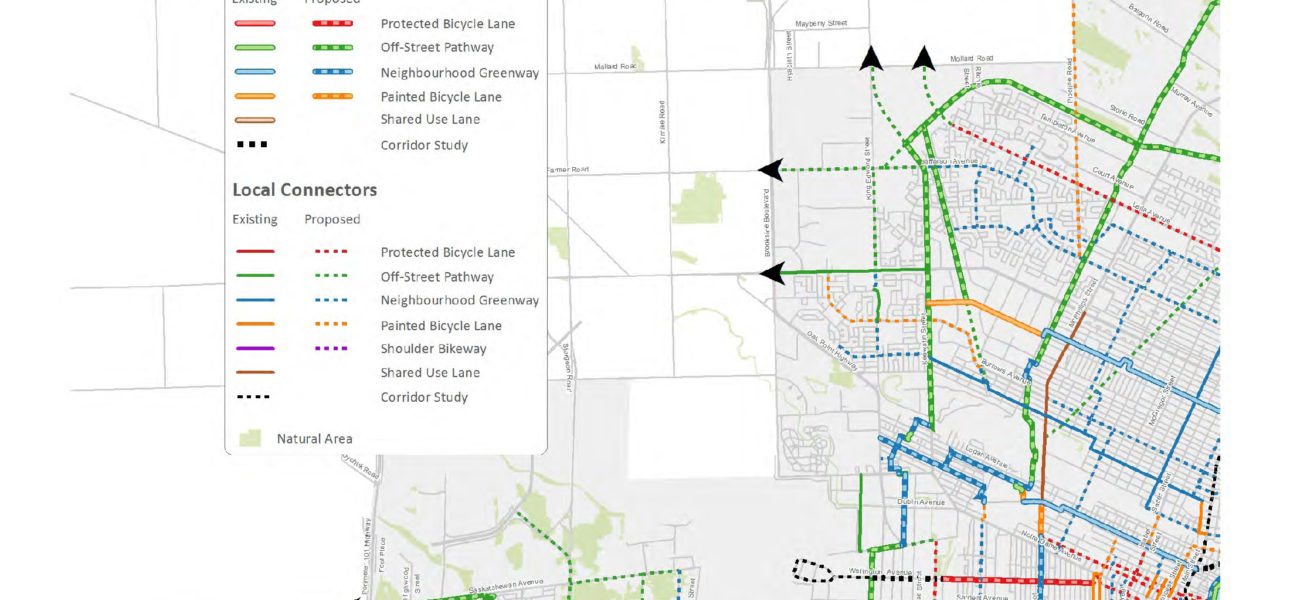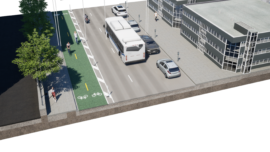In July 2015, the City of Winnipeg adopted its first-ever Pedestrian and Cycling Strategy, which provides a bold vision and comprehensive policy framework for active modes of transportation in Winnipeg over the next 20 years and beyond.
As the leaders in urban bikeway design and policy development, Alta teamed with other local and international firms to provide the City of Winnipeg with a comprehensive plan to increase participation in walking and cycling. Strategies included developing a “hub and spoke” network concept, designing a grid of downtown protected bikeways (cycle tracks), and implementing innovative policy guidance designed to promote walking and cycling and foster mode share growth for all types of trips.
The strategies were built upon analyses of Winnipeg’s transportation network and policy framework. Using tools such as Cycle Zone Analysis (CZA), equity analysis and origin-destination mapping, Alta identified communities of high need and high potential for investment in walking and cycling. The resulting strategy allows planners and engineers working on project development to efficiently perform a range of tasks, from preparing strategies, concepts, and plans, to prioritizing active transportation projects. The long-term plan includes a total of $334 million in improvements, which will be prioritized in an implementation strategy to identify short, medium and long-term priorities.
The Winnipeg Pedestrian and Cycling Strategies Plan won a national award for planning excellence from the Canadian Institute of Planners (CIP) in the Sustainable Mobility, Transportation, and Infrastructure Category.





